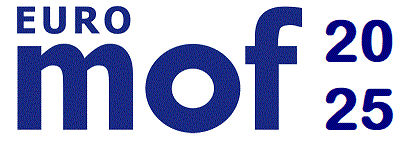We have been informed that some EuroMOF 2025 participants have received emails with the following subject lines:
“Hotel Booking for 'participant name' in Heraklion, Greece - September 21–24, 2025 – Cultural Conference Center of Heraklion” from Support Global (
[email protected])
“Accommodation in Heraklion - 21–24 September – Cultural Conference Center of Heraklion” from Lodgings (
[email protected])
Please be aware that these companies are
NOT ELIGIBLE to make hotel reservations for this conference and we advise that you DO NOT FOLLOW the instructions of the email.
Accommodation for the conference should be booked exclusively through the
OFFICIAL EuroMOF 2025 website:
https://www.euromof2025.com.
If you have any questions, please don’t hesitate to contact us.

.jpg)
















.png?width=171)




